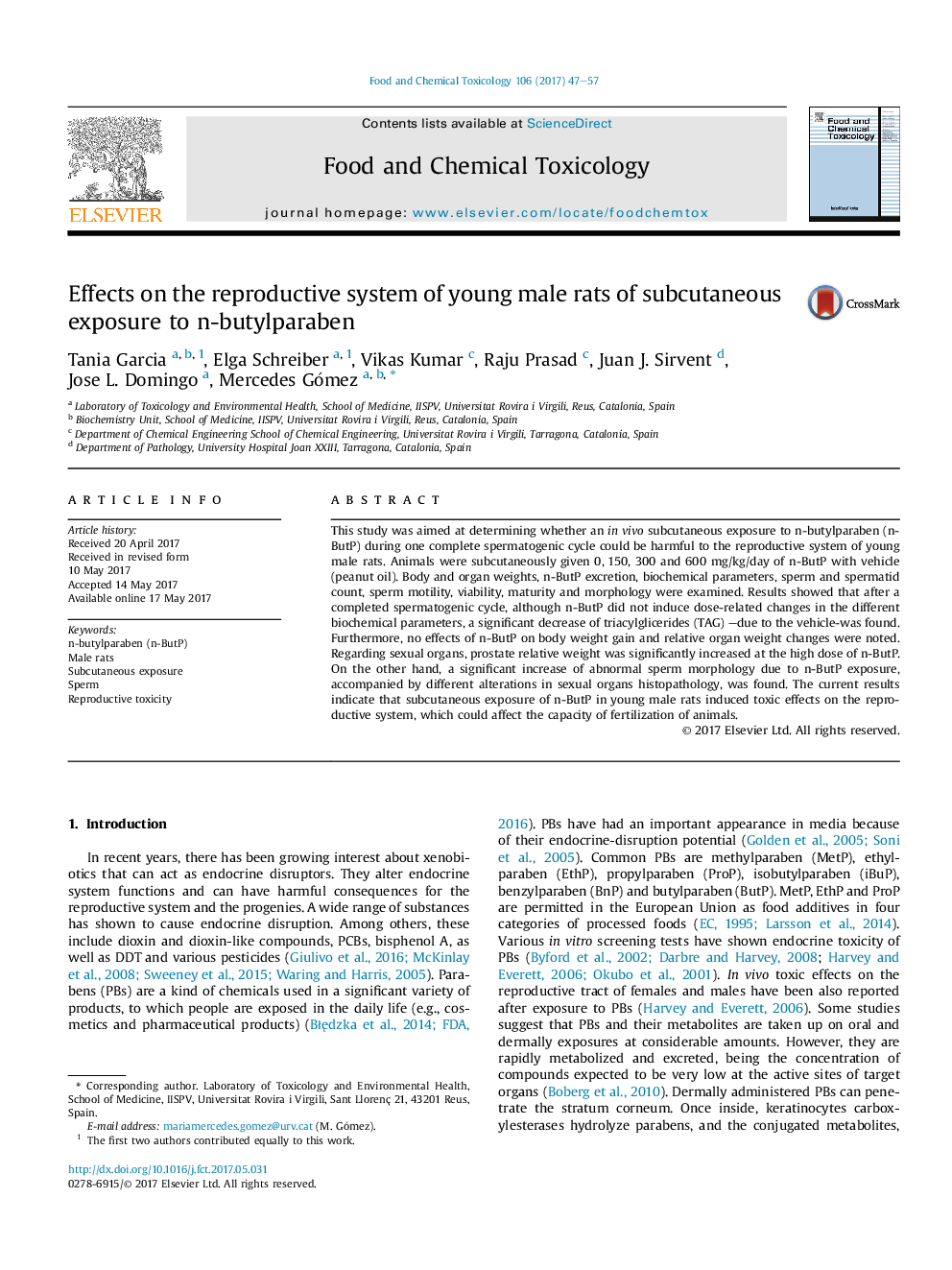| Article ID | Journal | Published Year | Pages | File Type |
|---|---|---|---|---|
| 5560107 | Food and Chemical Toxicology | 2017 | 11 Pages |
Abstract
This study was aimed at determining whether an in vivo subcutaneous exposure to n-butylparaben (n-ButP) during one complete spermatogenic cycle could be harmful to the reproductive system of young male rats. Animals were subcutaneously given 0, 150, 300 and 600 mg/kg/day of n-ButP with vehicle (peanut oil). Body and organ weights, n-ButP excretion, biochemical parameters, sperm and spermatid count, sperm motility, viability, maturity and morphology were examined. Results showed that after a completed spermatogenic cycle, although n-ButP did not induce dose-related changes in the different biochemical parameters, a significant decrease of triacylglicerides (TAG) -due to the vehicle-was found. Furthermore, no effects of n-ButP on body weight gain and relative organ weight changes were noted. Regarding sexual organs, prostate relative weight was significantly increased at the high dose of n-ButP. On the other hand, a significant increase of abnormal sperm morphology due to n-ButP exposure, accompanied by different alterations in sexual organs histopathology, was found. The current results indicate that subcutaneous exposure of n-ButP in young male rats induced toxic effects on the reproductive system, which could affect the capacity of fertilization of animals.
Keywords
Related Topics
Life Sciences
Agricultural and Biological Sciences
Food Science
Authors
Tania Garcia, Elga Schreiber, Vikas Kumar, Raju Prasad, Juan J. Sirvent, Jose L. Domingo, Mercedes Gómez,
